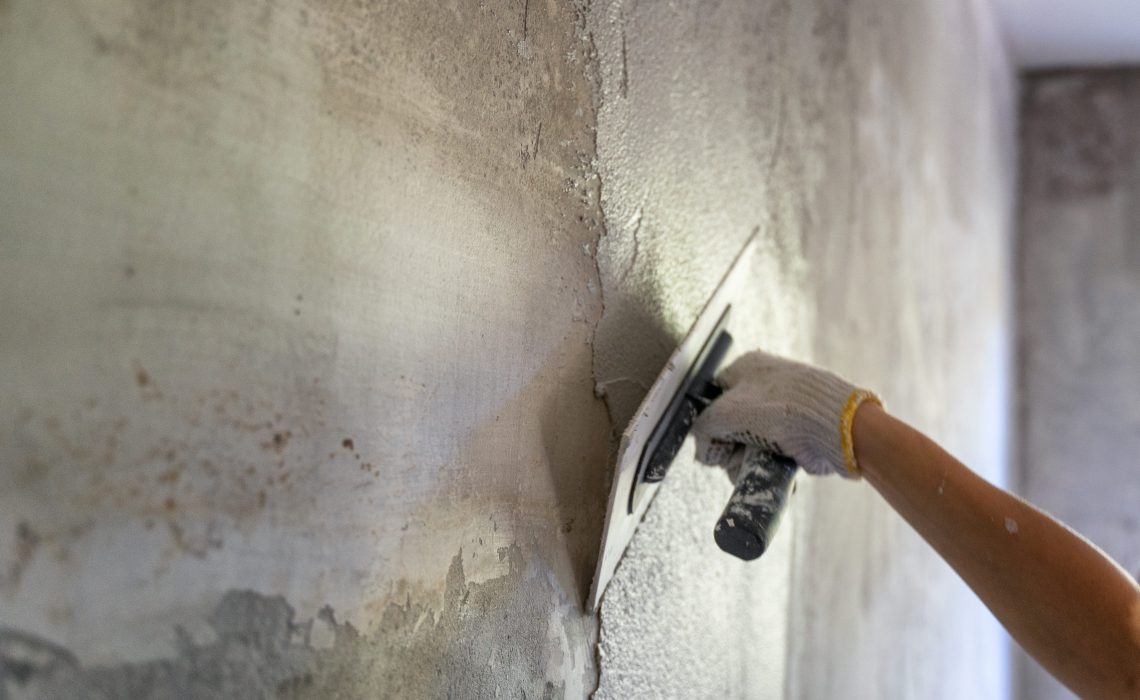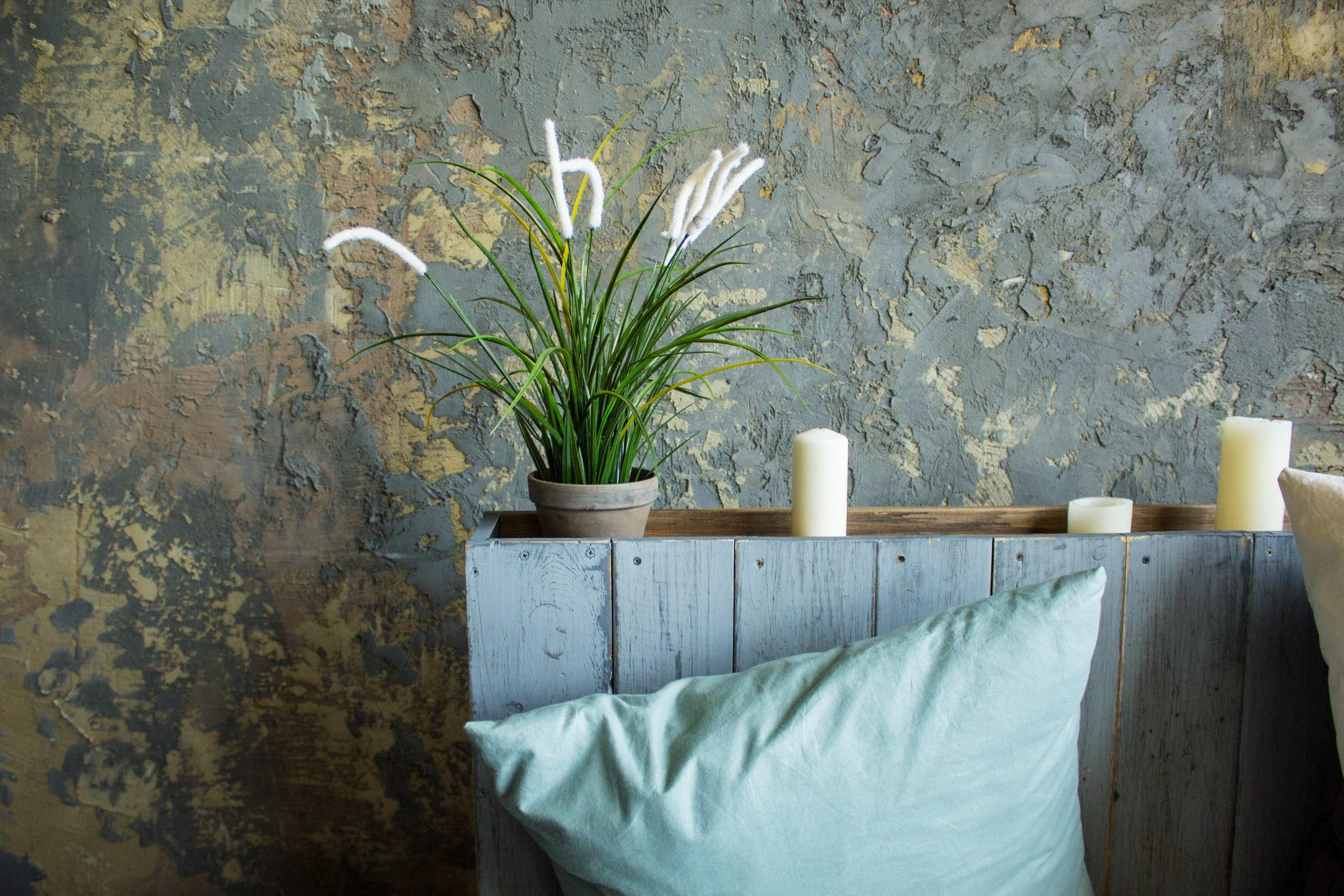
Have you ever wondered what is in Venetian plaster? Or whether it comes in different colours? And is Venetian plaster outdated as some people believe? Just another posh and fancy way of saying ‘plaster’? Or does it really stand up to the test of time? In this article, we’re going to delve a little deeper and see what all the fuss is about.
What is in Venetian plaster?
So, what is in Venetian plaster? What is it that separates Venetian plaster from regular, boring old plaster?
Venetian plaster is made up of traditional plaster mix, only with marble dust thrown into the mix. This is a wall and ceiling finish that can be applied using a spatula or trowel in thin layers, multiple times, and then burnished with a nice and smooth surface to create the illusion of depth and texture.
But, it’s not as simple as that. In fact, there are multiple Venetian plaster techniques, including ‘marmorino’, ‘sgraffito’, and ‘scagliola’.
When Venetian plaster is left un-burnished, it has a rough and stone-like finish, matte in nature and rough to the touch. As attractive as that may sound in terms of visual aesthetics, it is also very brittle and can damage rather easily, which is why burnished Venetian plaster is typically favoured over the former.

What’s all the fuss about Venetian plaster?
Venetian plaster, when applied properly, can be used to create a truly stunning, highly polished marble-like finish. It is especially useful when it is applied on surfaces that could not easily be furnished with genuine marble panels, and surfaces that would simply be too expensive to carve from genuine marble (e.g., columns and curved walls).
It is a stunning and accessible finish (while not entirely inexpensive), that allows people to enjoy the aesthetic opulence of marble without having to fork out the hefty price tag that goes with it.
What colours does Venetian plaster come in?
So, does Venetian plaster come in any different colours? Fortunately, Venetian plaster can indeed be tinted, or coloured, using a variety of natural and/or synthetic colourants.
This enables you to choose a specific colour or variety of marble that is desired, or indeed if such a natural variation of your desired colour doesn’t exist.
Most people, when selecting Venetian plaster, tend to opt for a natural marble look. However, again, you do have the option to mix it up and choose more interesting and exotic colour choices if you wish.
It all depends on the project and your individual tastes.
Following that, with an application of a wax sealant, Venetian plaster can also be made to be waterproof, which is recommended, given how naturally porous plaster finishes are.
Is Venetian plaster outdated?
If you’ve been thinking about getting Venetian plaster for your wall, you are likely wondering whether it is outdated or not. And the answer to that question is no! Yes, Venetian plaster is an incredibly old finish—some even speculating it dating as far back as 9,000 years in ancient Mesopotamia—but that by no means makes it outdated.
Venetian plaster has stood the test of time because of how readily available it is, and how stunning it looks.
Again, it allows people who desire a marbled finish to acquire such, without having to fork out a ridiculous amount for a genuine marble finish.
Not so different to antique furniture. Sure, it’s not for everyone, but in this case, it is the age and style that makes it so attractive in the first place. The very same applies with Venetian plaster; it is the old marbled and opulent style that we crave! And with good reason too.
What’s the difference between real Venetian plaster and traditional Venetian plaster?
There is much confusion around Venetian plaster, as many companies advertise ‘real’ Venetian and ‘traditional’ Venetian plaster. But, what is the difference between the two?
In essence, real Venetian plaster, as mentioned above, contains genuine marble dust, thus adding to the unique beauty of the finish. Traditional Venetian plaster, on the other hand, is made up using lime or gypsum.
Will normal plaster do?
Regular plaster, when applied properly, is certainly an attractive enough finish. Additionally, regular plaster can easily be painted over so that you can achieve any colour scheme you want. However, as a standalone finish, regular plaster looks unfinished. Venetian plaster, on the other hand, looks perfect as it is without any additives.
How long does Venetian plaster take to apply?
The traditional way of applying Venetian plaster is a process that is actually rather time-consuming. This is because many layers are required, with a long period of time in between each application in order for the plaster to dry thoroughly.
If you are in a rush and you aren’t particularly too precious about having genuine Venetian plaster, then there are Faux Venetian plaster alternatives that can be applied in a fraction of the time.
It all depends on how quickly you would like to move things along. In our opinion, it is almost certainly worth the wait!
Conclusion
Here’s a quick summary:
Venetian plaster is made up of plaster mix and marble dust can be tinted with organic and synthetic colourants to achieve your desired colour, and is definitely not outdated! If you are looking for a truly special, authentic, and opulent finish for the walls and ceilings in your home, then you cannot go wrong with a dab of Venetian plaster!


